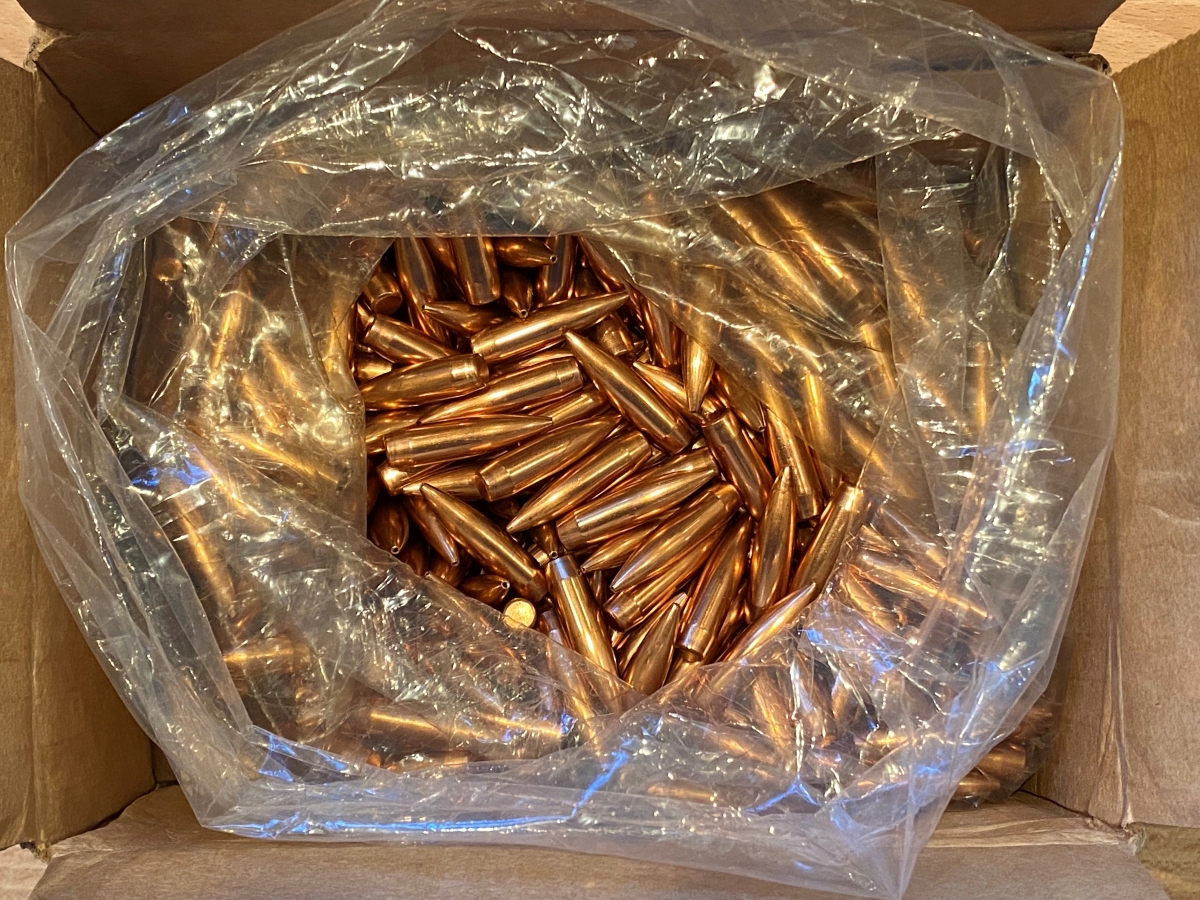Creedmoor Sports was nice enough to send us a box of these American Bullet Company “Practice Bullets.” These bullets are advertised as factory seconds that may exhibit: “minor scratch marks, polishing media in the hollow point, boat tail dimensions that vary slightly, weight variance that is out of spec, and other minor cosmetic defects.” While these minor shortcomings *might* make them a bit less desirable for serious competition applications, they should still be more than adequate for training and practice.
These particular bullets are a .308″ caliber 175 grain boat-tail hollow point projectile.
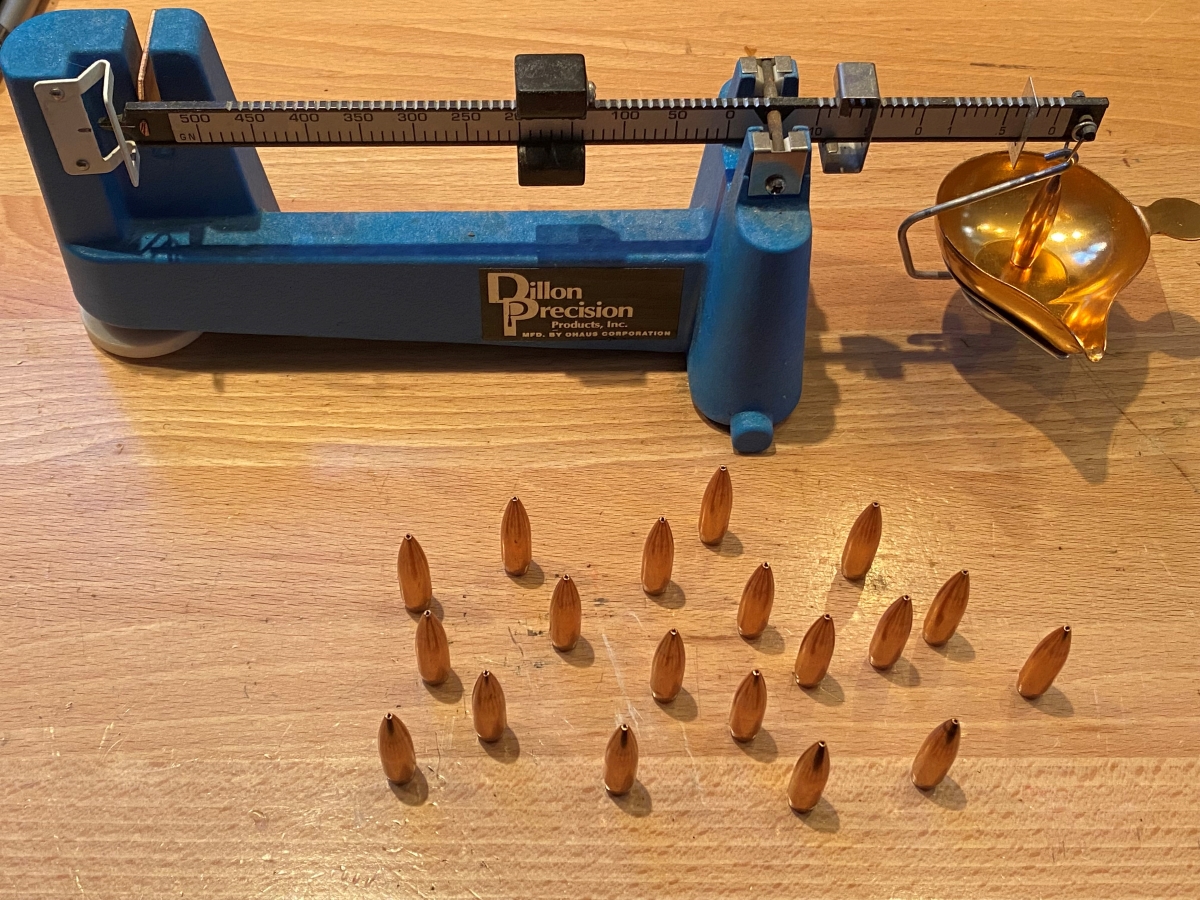
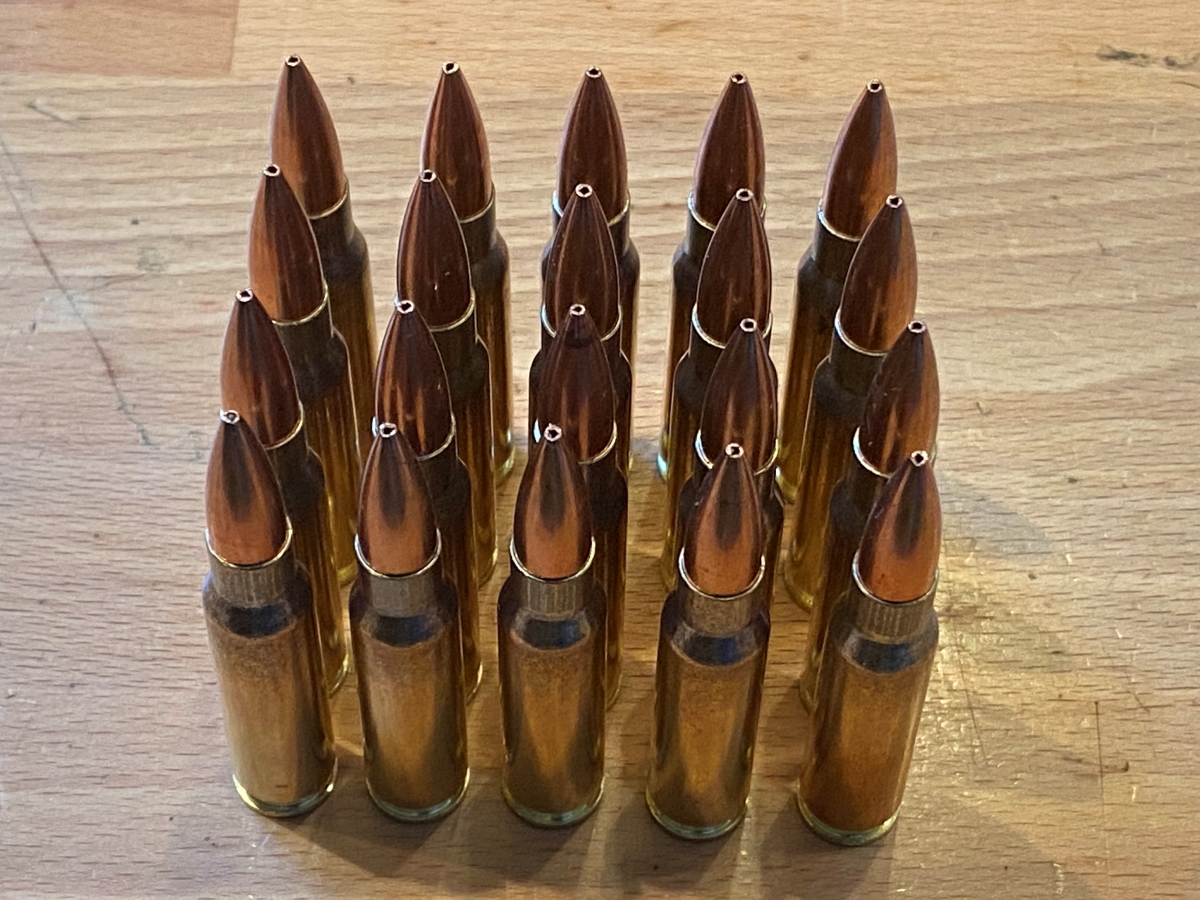
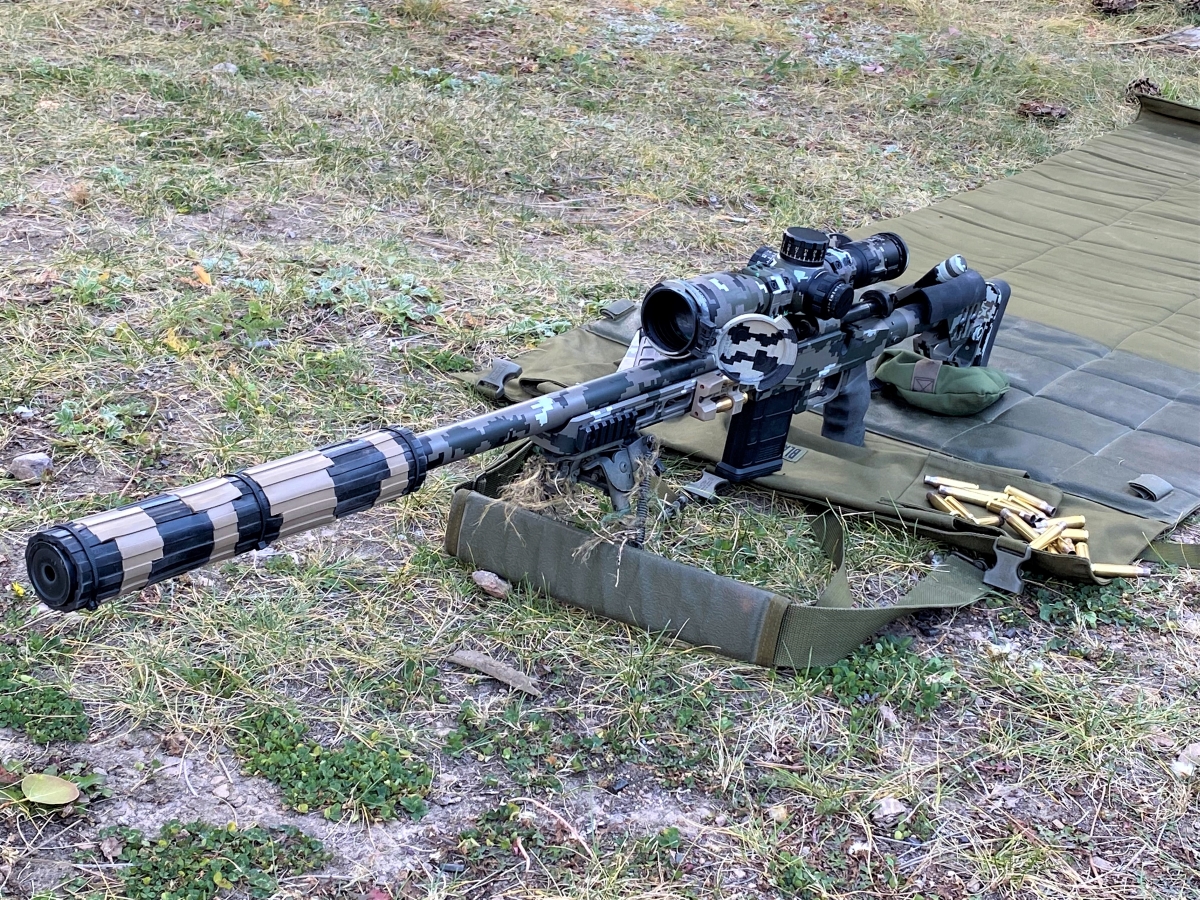
Testing day was a beautiful early autumn day in the mountains of Northern New Mexico. Conditions were 72° F, bright and clear sunlight, 20% humidity, gusty full-value winds from the left around 8 mph. Elevation at the small “wild” range near my house is right around 8500′, unfortunately distances are limited to just over 100 yds. With the bright, direct sunlight I did have some mirage to contend with.
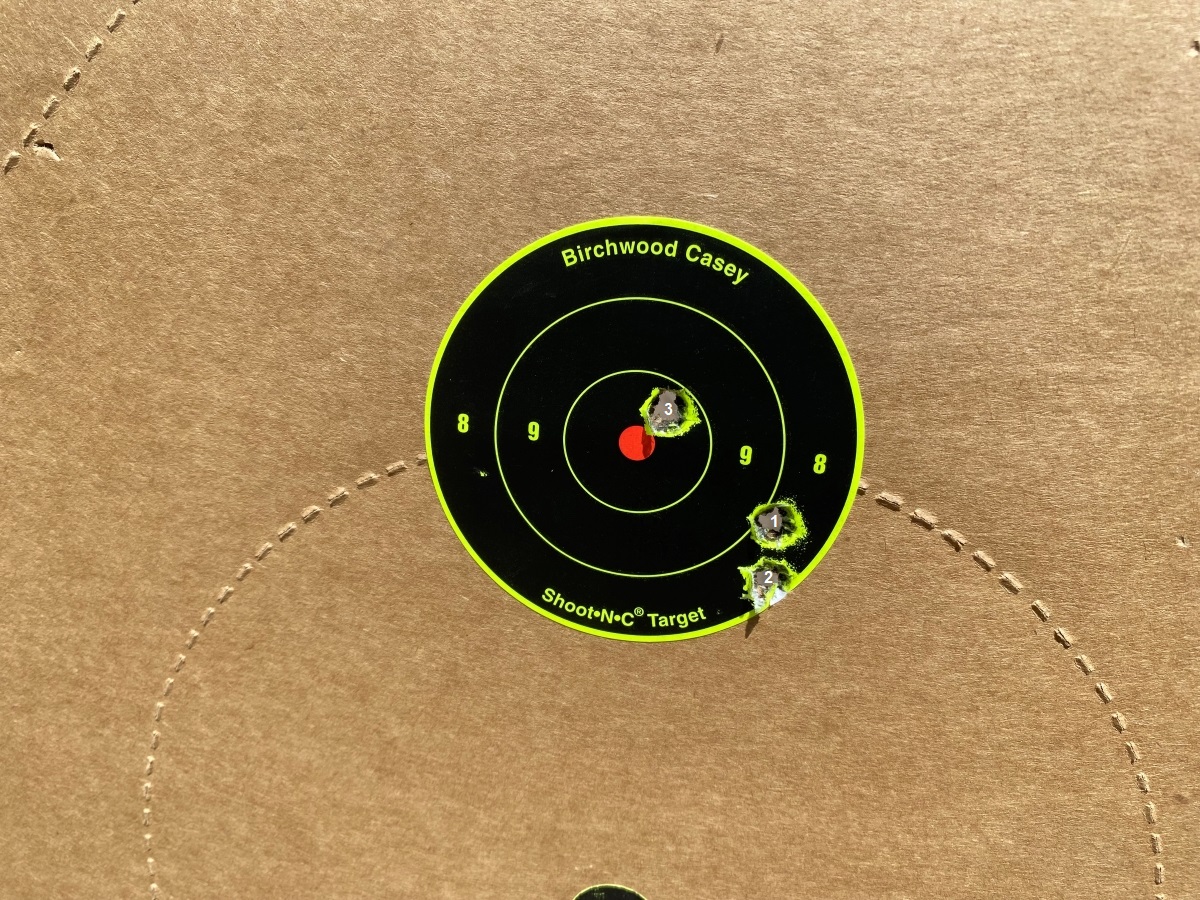
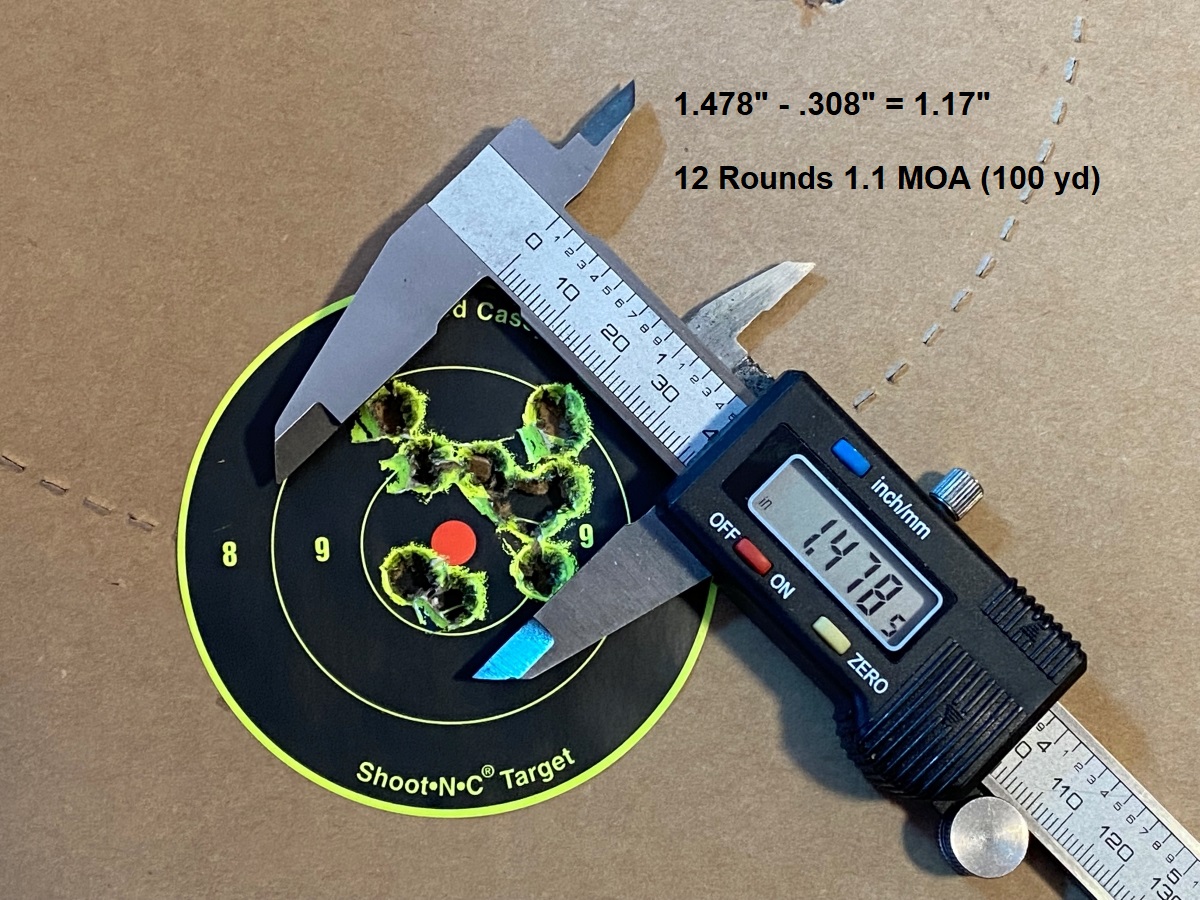
The typical 5-shot group performance of this rifle (and shooter) is 3/4″ at 100 yds with 175 grain Sierra Match Kings. A 12-shot group stacking up at just slightly over 1 MOA for a practice bullet at roughly 50% to 75% the cost of similar name-brand bullets… that’s a great value in my opinion. 1.1 MOA performance means these bullets should have no problem ringing standard 18″ X 30″ steel silhouettes out to 1000 yards if the shooter does their part and reads the wind correctly.
We all probably know someone who swears their factory .308 bolt gun shoots sub-half-MOA groups. Are factory rifles capable of that accuracy? …with the right ammo, optics, and shooter, sure. Realistically though, in my experience as an instructor, competitor, and student, the majority of scoped rifle shooters are doing well if they are keeping their shots consistently under 2″ at 100 yards – that’s in field conditions, shooting prone, not bench-rest shooting.
So, for a practice and training bullet, with acknowledged variations and minor defects, this performance is more than acceptable. I can’t wait to try these out at longer distances and in a rifle with a longer barrel and stronger action. Until then, I consider these an excellent and thrifty choice for general shooting, practice, and training.
I received this product as a courtesy from the manufacturer via Spotter Up so I could test it and give my honest feedback. I am not bound by any written, verbal, or implied contract to give this product a good review. All opinions are my own and are based off my personal experience with the product.
*Firearms ammunition hand-loading involves handling flammable, explosive, and toxic materials. Follow manufacturer’s recommendations or a professional load-guide and use care when developing loads. Some combinations that fire safely in some rifles may be over-pressure in other rifles.
*The views and opinions expressed on this website are solely those of the original authors and contributors. These views and opinions do not necessarily represent those of Spotter Up Magazine, the administrative staff, and/or any/all contributors to this site.
